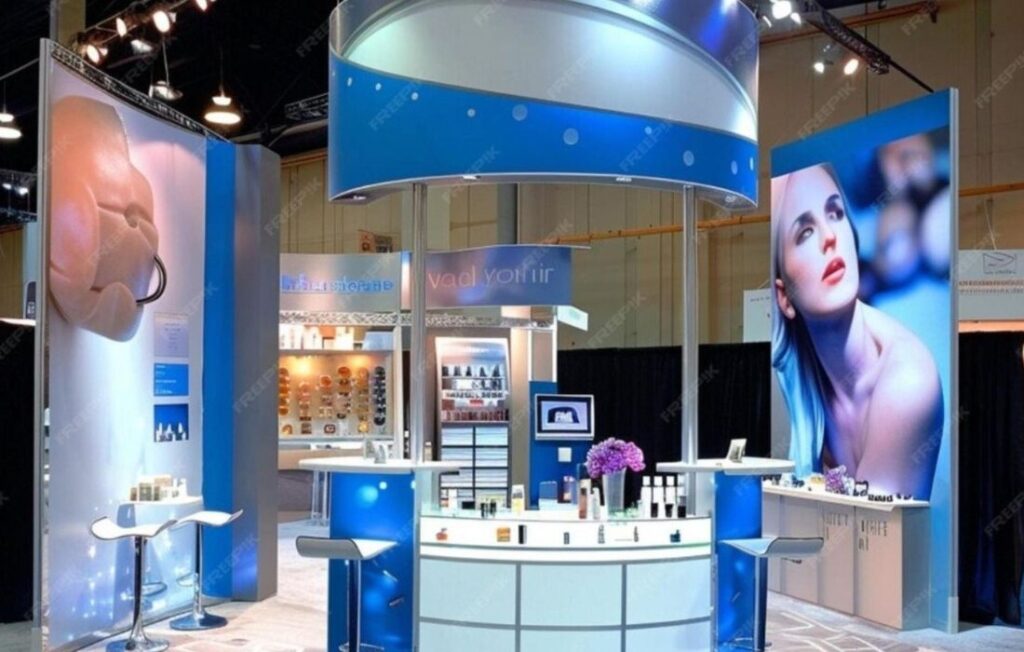All industries are recognizing environmental consciousness as imperative, and events and exhibitions are no exception. Brands are consistently enjoined to present every aspect of sponsorship as sustainable, not just their products, especially at public-facing experiences like trade shows. Because of awareness of environmental impact, the rising trend is for many companies to engage in their approach to designing, exhibiting, and dismantling their trade show exhibits with green practices in mind.
Whether it’s eco-friendly materials, energy-efficient lighting, or sustainable shipping, all these things aren’t an afterthought anymore but a norm. By working with eco-conscious suppliers, you aren’t just reducing your carbon footprint and promoting sustainability and eco-friendly practices at every level, but also attracting eco-conscious buyers. Thus, whether you invest in custom-built exhibits or rent an exhibit space, going green at trade shows is now both a feasible and tactical option.
Table of Contents
Smart Sustainable Strategies for Eco-Friendly Trade Show Displays

Repurpose with a Used Trade Show Booth
Repurposing materials is one of the easiest and most efficient ways to be environmentally conscious, and a used trade show booth is a great example of combining sustainability with cost savings. Instead of opting for new materials that produce waste and emissions, brands can refurbish existing structures and reduce waste.
Not only can these repurposed booths be rebranded to navigate any campaign or messaging strategy, but they also use fewer resources. Furthermore, timeline components in fabrications such as modular booth systems can be utilized for multiple events to decrease single-use materials from contributing to landfills.
Use Recyclable or Renewable Materials
The first step to sustainable exhibits is the selection of your materials. Exhibitors are increasingly using lightweight and recyclable materials such as aluminum, fabric graphics (with water-based inks), and biodegradable flooring for exhibit construction. Renewable woods like bamboo that grow quickly are becoming more common for furniture and display framing.
These materials are less impactful on the environment and your transportation costs. Less weight means less impact on the environment. By selecting eco-certified or cradle-to-cradle materials, exhibitors are making a public and visible statement on responsible production.
Incorporate Energy-Efficient Lighting and Tech
Light is an important part of any trade show exhibit, and many sustainable exhibits will incorporate LED lights, which consume much less energy than halogen or incandescent bulbs. You could even use portable solar panels or rechargeable battery packs instead of energy sources that rely on grid energy, especially for outdoor shows.
Using digital tablets, QR codes, or projection screens can reduce the number of printed brochures, and paper consumption will help reduce your footprint. If you are going to use technology, select the one that uses energy efficiently and is impactful; it will allow you to keep your displays fresh and green.
Minimize Shipping and Transport Footprint
Logistics, including shipping of booth materials, represents a significant fraction of the carbon footprint of a trade show. By selecting lightweight exhibit components, smaller packed sizes, and locally sourced items to rent, you can dramatically reduce the bulk of transportation emissions. Collapsible or modular exhibit systems can also reduce transportation impacts by fitting more compactly in freight or shipping trucks.
If you are able to rent what you need on-site, long-haul shipping can be eliminated. When you can’t rent your exhibits on-site, brand your exhibit with a regional manufacturing or storage hub so you can save on mileage, fuel, and emissions; this is especially important if you are exhibiting in multiple locations throughout the year.
Design for Reuse and End-of-Life Recycling
By creating booths with reuse and recyclability in mind, booths can promote sustainability for more than just the event duration. Many components can be made to easily disassemble, flat-pack for storage, reuse, and be recycled. If labels or graphics are referenced, these can be attached with Velcro or a system that holds the replaceable aspect and prevents damage to the base; the same applies to printed graphics that may be taken down and used again later.
Companies should consider the post-event plan for booth materials. To ensure the materials don’t go to landfills, they can take great comfort in working with vendors that incorporate recycling systems or possibly suppliers that will take back parts. Simple strategies can really work in prolonging the exhibit’s life cycle and in support of environmental goals.
End Point
Sustainable exhibiting is no longer just a “nice to have”—it’s an expectation. Repurposing a previously used trade show display, choosing reusable materials, and reducing transportation emissions are just a few ways to be sustainable with displays. Brands that take the time to “go green” with their trade show exhibits are not only helping the planet but are also earning trust, credibility, and relevancy in an increasingly values-based marketplace. Sustainable practices today result in more predictable business and sustainable responsibility tomorrow.
Also Read: Innovative Elevator Design Ideas for Modern Commercial Spaces







